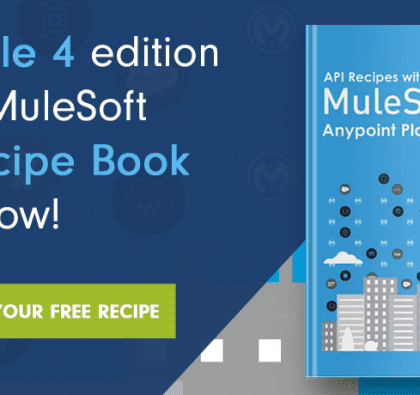
Coforge in the news: Allica builds a new digital bank
UK challenger bank creates connected, personalized experiences for small and medium businesses 2x faster with reusable APIs

UK challenger bank creates connected, personalized experiences for small and medium businesses 2x faster with reusable APIs

Watch this webinar recording to understand what is DevOps and learn how to apply a DevOps methodology in developing MuleSoft APIs.

In this webinar recording we discuss the most important things you’d need to look at before, during and after the migration, to avoid spikes in cost and effort.
—–
Mule 4 is the latest and most advanced version of Mule runtime engine and has been designed to boost scalability and support performance optimisation and smooth upgrade. There can be many reasons for you to start considering upgrading to the newest version of Mule, for example:
– Your Mule version is reaching End-of-Support or End-of-Life
– You want to make significant updates to the existing applications
– You want to take advantage of key Mule 4 capabilities
– You want to have all your apps on one Mule version
We are covering the areas that we consider the most important for correctly planning and executing your Mule 4 migration. We are going over the critical things you need to look at before, during and after the migration, in order to avoid unwelcome delays and surprises that will increase cost and effort.
At the end, we provide you with a tested step-by-step approach so you have a successful go-live of your Mule 4 environment and applications.

The demystifying and democratisation of innovation by IT leaders will help bolster the self-service of the broader organisation.

In this webinar recording we join Confluent to discuss why event streaming has become so important for business success and what it takes to become an event-driven organisation.
—–
According to Gartner, “By 2020 event sourced, real-time situational awareness will be a required characteristic for 80% of digital business solutions. And 80% of new business ecosystems will require support for event processing.” In this webinar recording we join Confluent to discuss why event streaming has become so important for business success and what it takes to become an event-driven organisation:
Why companies are adopting Real Time and Event Streaming
– Business Digitisation Trends
– Modernising data architecture
– Enabling new outcomes
The journey to become an event-driven business with Kafka
– 5 steps to the event-driven business
– Enterprise scale event streaming
– Use cases across industries

In this webinar recording we join MuleSoft to discuss how to construct multi-layer defences against attacks and safeguard the edge of your network, every API, and your data.
—
API security is critical to digital businesses as the economy doubles down on operational continuity, speed, and agility. Every day, new threats and vulnerabilities are created, and every day, companies find themselves racing against the clock to patch them.
In this webinar recording we join MuleSoft to discuss how to construct multi-layer defences against attacks and safeguard the edge of your network, every API, and your data:
– Eliminate vulnerabilities at the network edge based on observed attack patterns at the API gateway
– Enforce security by configuring mandatory policies
– Hide sensitive data with format-preserving tokenization to reduce compliance scope

We once again join Confluent, this time to discuss the importance of event streaming in banking with real life customer examples.
—
Modern banking is not just about modern technologies. It calls for a change of the way we think about technology and the future of banking as a business.
For banks, perhaps more than any other organisation, the ability to capture and process events, as they happen, and analyse them within different contexts means that they can create better customer experiences, compete with digital native challengers, cope with new regulatory requirements and minimise risk.
With event streaming, it’s not about the technology anymore and it’s not about the data. It’s about transforming the way we think and build our applications with events and context as the main drivers.
In this webinar recording, we discuss the changing landscape from traditional to contextual, event driven architectures with real-life examples of what different banks have achieved by adopting an event-streaming approach.

In this webinar, we take you through the key areas you need to consider before the installation, so you can successfully implement Anypoint Runtime Fabric.
—
Anypoint Runtime Fabric is a container service that brings cloud benefits to on-premise deployments — whether they are in data centres or on a private cloud.
The uptake has been significant since its release, but there have been a lot of questions on how to install and set it up across different environments.
In this recording, we cover the things to consider to ensure your successful implementation of Anypoint Runtime Fabric in alignment with your IT environment and policies:
Configuration
Core components
Network architecture
Hardware requirements
Best practices
New features

While the times have been changing for a while, current events have accelerated the need for public agencies to adapt to a changing world.

When it comes to reaching market faster and scaling with both speed and stability, APIs have been a crucial component of many Fintechs.

Since 2019, key developments such as COVID-19 have influenced investment trends in Big Data. Drawing on insights from WHISHWORKS’ Big Data Report 2020 we outline the key drivers of investment in Big Data this year.

We are extremely excited to announce the latest edition of our book API Recipes with MuleSoft® Anypoint Platform™, featuring 34 practical API recipes for Mule 4! The IT and integration […]